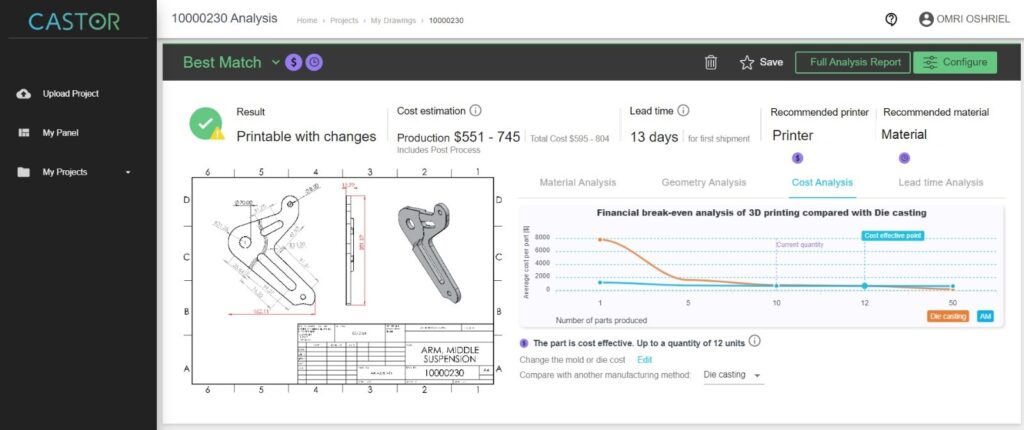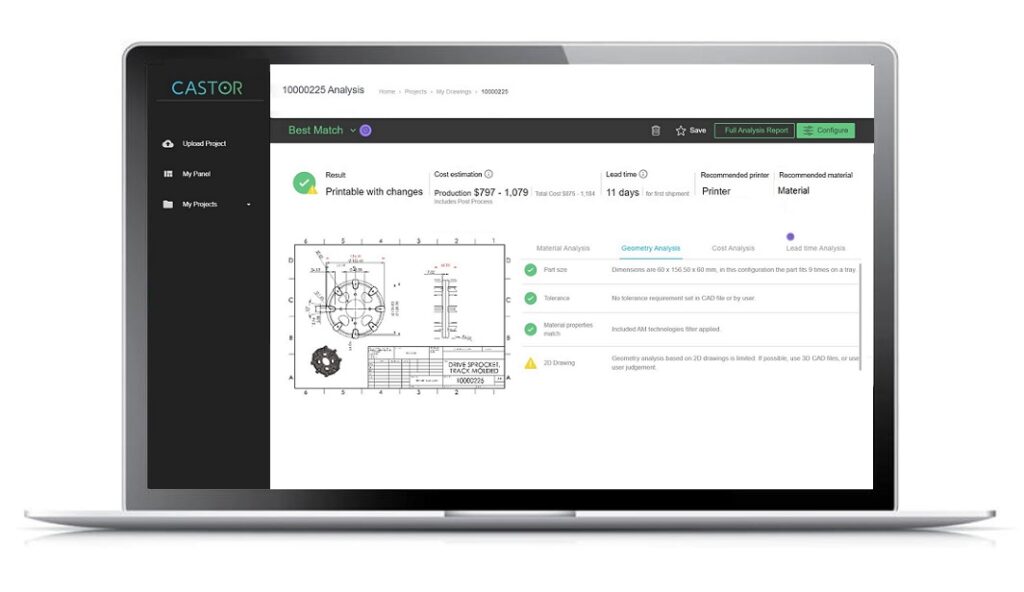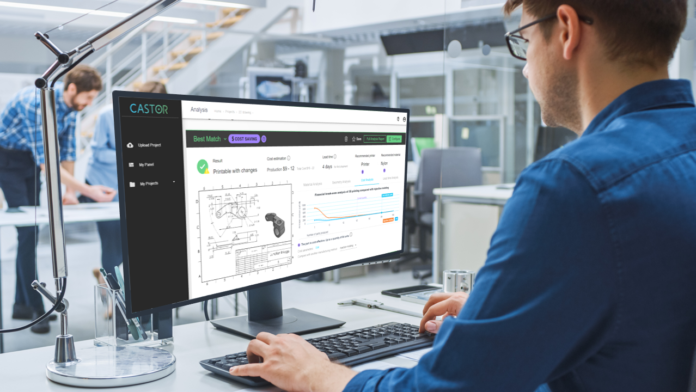Software company Castor has developed a new feature for its part identification software. As a reminder, the company that raised $3.5 million last year develops a portfolio of products that enables organizations to achieve part identification for additive manufacturing out of thousands of files, using a set of geometric and economic analyses.
The new feature will enable Castor users to automatically analyze 2D drawings, both technically and economically. For companies that base their manufacturing primarily on 2D PDF drawings, even when 3D CAD files are not at reach, the new capability will make it easier to automate parts identification. This new feature will probably be a relief for companies that rely on 2D drawings that are decades old, since it can be quite difficult and time-consuming to determine which of their parts could be 3D printed.

Castor says the technology behind its 2D analysis feature is based on computer vision that interprets the geometry and product manufacturing information (PMI) of each part and machine learning models that have gained deeper insights and improved over time due to the vast number of parts that are uploaded to CASTOR on a daily basis.
“CASTOR is expanding its value proposition by offering many companies, which were not able to assess the compatibility of 3D printing to their organization until now, a feasible way to automatically analyze their design files and gain deep valuable data and knowledge regarding the potential of AM for them”, Says Omer Blaier, Co-Founder & CEO of CASTOR.
“We give these organizations a tool that helps them find new business cases and discover opportunities to reach their initiatives and 3D printing goals, using their existing 2D design files”.
Castor’s 2D analysis feature opens up new opportunities for legacy products or AM spare parts program.
On a practical level, the company headquartered in Israel, explains that its software enables to upload thousands of parts from 2D drawings at once. Once parts are uploaded it automatically extracts PMI (product manufacturing information) out of PDF files of 2D Drawings and calculates parts’ size, volume, complexity etc., based on dimensions from projected views. It then suggests 3D printability of parts, recommends optimal technology and materials, and performs a financial analysis of Additive Manufacturing compared to Traditional Manufacturing. It exports useful information and insights, both as a formal PDF report and a raw data excel sheet.
The results will guide you on which parts to purchase or to further explore their 3D CAD files. Once the selected files are in a 3D format the software, which is available ‘on cloud’ and ‘on-premise’, can also deliver recommendations for re-designing parts for Additive Manufacturing (DfAM) – such as part consolidation and weight reduction. The advanced capabilities enable quick assessment of a part’s likelihood to failure, using a unique, tailored to AM, Finite Elements Analysis, a press release reads.
Last but not least, amid the various technical analyses that enable Castor to meet the growing demand for AM solutions, one notes size and tolerance checks, cost breakdown, lead time estimation as well as supply chain improved resilience.

Remember, you can post free of charge job opportunities in the AM Industry on 3D ADEPT Media or look for a job via our job board. Make sure to follow us on our social networks and subscribe to our weekly newsletter : Facebook, Twitter, LinkedIn & Instagram ! If you want to be featured in the next issue of our digital magazine or if you hear a story that needs to be heard, make sure to send it to contact@3dadept.com






